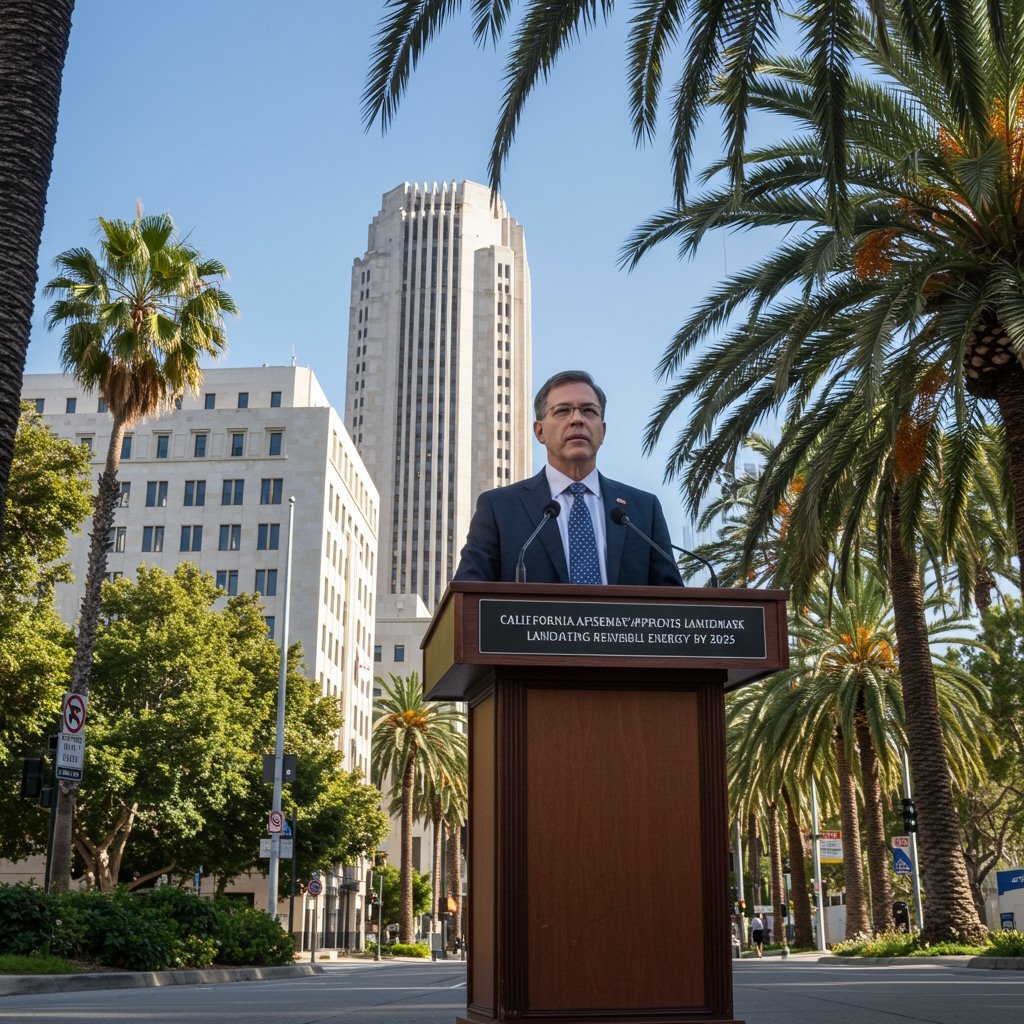Sacramento, CA – In a significant legislative move accelerating the state’s commitment to clean energy, the California State Assembly has given its approval to Assembly Bill 2050. This landmark piece of legislation, championed and sponsored by Assemblymember Elena Rodriguez, lays out a bold mandate for California’s energy future.
Bill Mandates Aggressive Timeline
The core of Assembly Bill 2050 is its stringent requirement for electricity retail sales within the state. The bill mandates that an ambitious 90% of all electricity retail sales in California must originate from renewable or other zero-carbon energy sources by the year 2035. This target represents a considerable acceleration and tightening of previous clean energy goals set by the state, signaling a heightened urgency in addressing climate change and transitioning away from fossil fuels.
The passage of AB 2050 through the Assembly occurred on March 8, 2025. This date marks a pivotal moment in California’s ongoing efforts to decarbonize its economy and electricity grid.
Moving to the Senate
Following its successful vote in the Assembly, Assembly Bill 2050 now progresses to the California State Senate for further consideration. The legislative journey will continue through the Senate committee process and eventually to a full Senate vote, where it will undergo additional scrutiny and debate. The bill’s reception and potential amendments in the Senate will be closely watched by stakeholders across the energy sector and environmental advocacy groups.
Key Provisions Beyond the Mandate
Beyond the headline 90% target, AB 2050 includes several crucial provisions designed to support and facilitate this rapid transition. These components acknowledge the complex nature of transforming a large-scale energy system.
One key area addressed is grid modernization. Achieving a highly renewable grid requires significant upgrades to infrastructure to handle variable energy sources like solar and wind power effectively and maintain reliability. The bill’s provisions in this area aim to ensure the state’s electrical grid is capable of integrating a much higher percentage of clean energy while remaining stable and resilient.
Another critical element is the inclusion of energy storage incentives. Energy storage, such as large-scale batteries, is essential for capturing excess renewable energy generated during peak production times (like midday sun) and discharging it when demand is high or renewable generation is low (like in the evening). By incentivizing energy storage, the bill seeks to overcome the intermittency challenge of renewables and ensure a consistent, reliable power supply.
The bill also emphasizes equitable implementation. This provision is crucial for ensuring that the transition to clean energy benefits all Californians, including low-income communities and disadvantaged areas, and does not disproportionately burden certain populations. Equitable implementation often involves directing investments and job training opportunities to these communities and ensuring access to clean energy programs and benefits.
Impact on Energy Providers
The passage of AB 2050 sets a new, aggressive standard for the state’s major energy providers. Companies such as Pacific Gas and Electric Company (PG&E), Southern California Edison (SCE), and San Diego Gas & Electric (SDG&E) will face stringent requirements to dramatically accelerate their procurement and integration of renewable and zero-carbon resources. Meeting the 90% target by 2035 will necessitate significant investment in new generation capacity, transmission infrastructure, and energy storage solutions.
Utility planning processes, resource procurement strategies, and capital investment programs will all need to align with this accelerated timeline. The bill is expected to drive substantial activity and innovation within the state’s energy sector as providers work to comply with the new mandate.
Context of Extensive Debate
The development and passage of AB 2050 have occurred following extensive debate among a wide array of stakeholders. Policymakers, utilities, and environmental groups have engaged in considerable discussion regarding the feasibility, cost, and necessary steps for achieving aggressive clean energy targets. This debate reflects the complex trade-offs and challenges inherent in transitioning a large economy like California’s to primarily renewable sources.
The discussions leading up to the Assembly vote likely covered topics such as grid reliability, cost impacts on consumers, the pace of technological development for storage and grid management, and strategies for ensuring a just transition for workers in fossil fuel industries.
A Major Development
The passage of AB 2050 by the California State Assembly represents a major development in the state’s pioneering clean energy policy. By setting a near-term, ambitious target of 90% renewable and zero-carbon electricity by 2035, the bill aims to solidify California’s position as a leader in the fight against climate change and the transition to a sustainable energy future. Its journey through the State Senate will be the next critical phase in determining if this bold vision becomes state law.


















